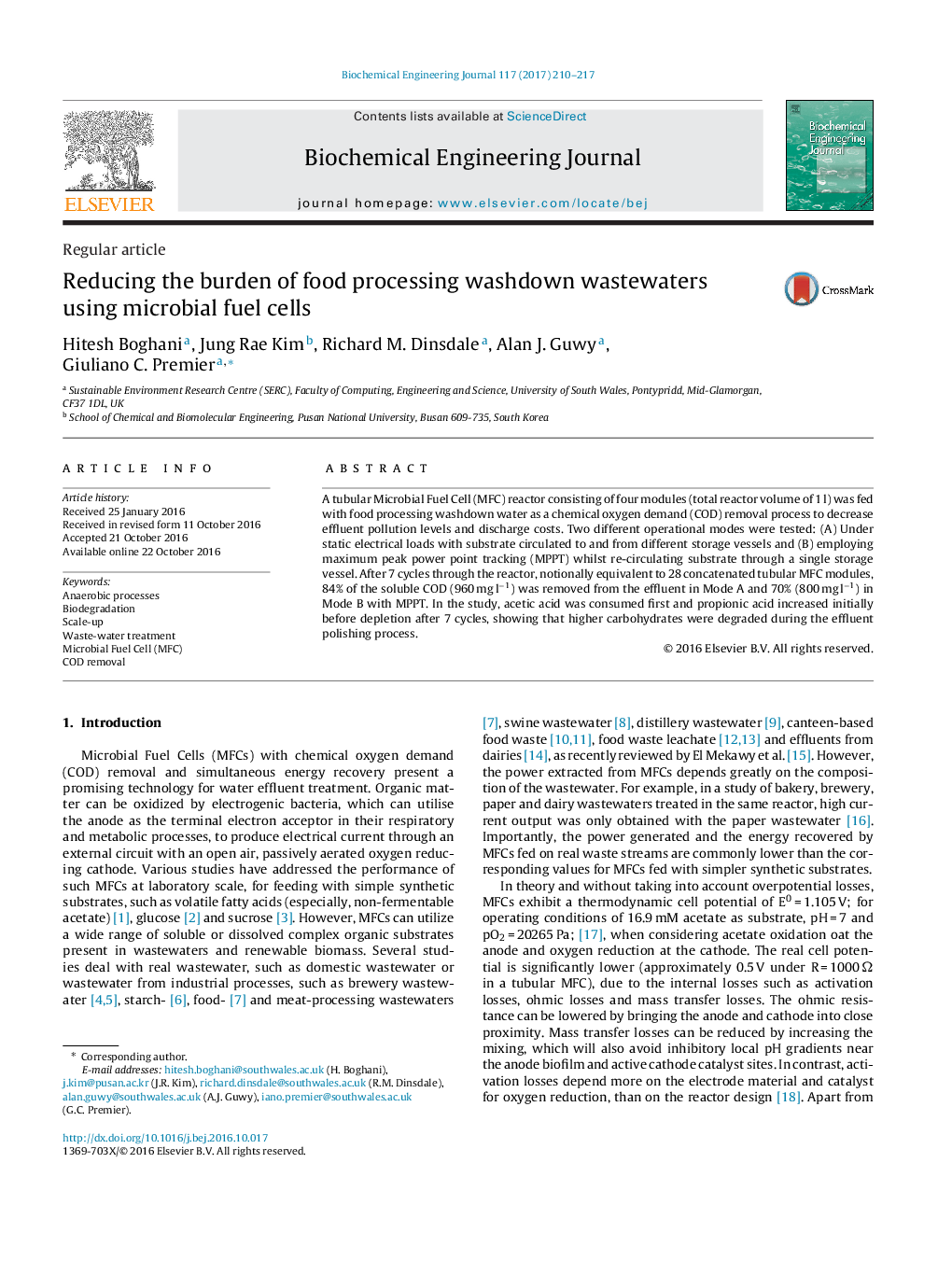| کد مقاله | کد نشریه | سال انتشار | مقاله انگلیسی | نسخه تمام متن |
|---|---|---|---|---|
| 4752209 | 1361276 | 2017 | 8 صفحه PDF | دانلود رایگان |
- Tubular MFCs may usefully treat washdown wastewaters from food production.
- Maximum power point tracking control strategy resulted in 70% COD removal.
- Significant cost savings of 0.466 £UK mâ3 treated were achieved.
- Power production was associated with the availability of acetic- and propionic acid.
A tubular Microbial Fuel Cell (MFC) reactor consisting of four modules (total reactor volume of 1 l) was fed with food processing washdown water as a chemical oxygen demand (COD) removal process to decrease effluent pollution levels and discharge costs. Two different operational modes were tested: (A) Under static electrical loads with substrate circulated to and from different storage vessels and (B) employing maximum peak power point tracking (MPPT) whilst re-circulating substrate through a single storage vessel. After 7 cycles through the reactor, notionally equivalent to 28 concatenated tubular MFC modules, 84% of the soluble COD (960 mg lâ1) was removed from the effluent in Mode A and 70% (800 mg lâ1) in Mode B with MPPT. In the study, acetic acid was consumed first and propionic acid increased initially before depletion after 7 cycles, showing that higher carbohydrates were degraded during the effluent polishing process.
Journal: Biochemical Engineering Journal - Volume 117, Part A, 15 January 2017, Pages 210-217
